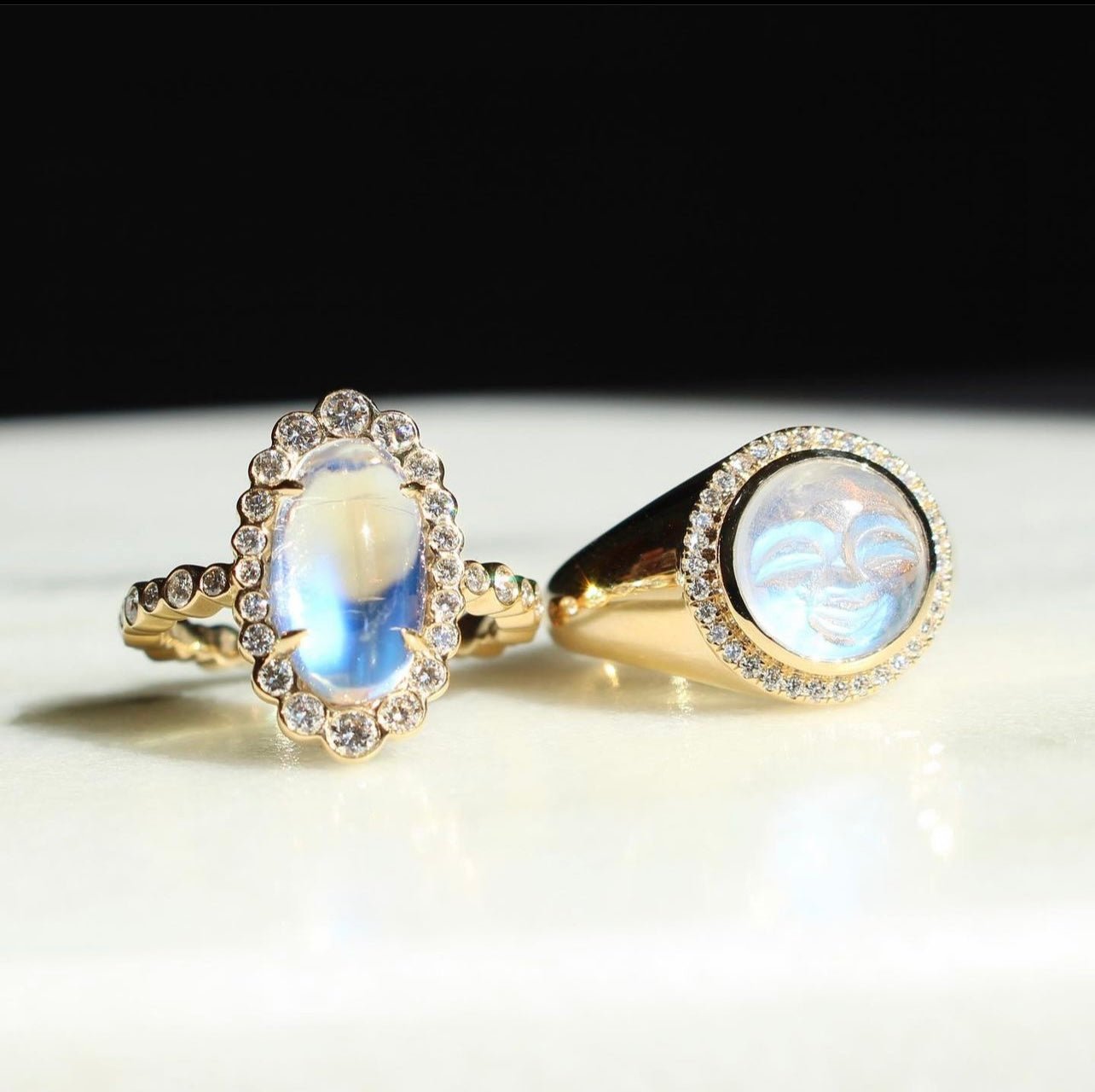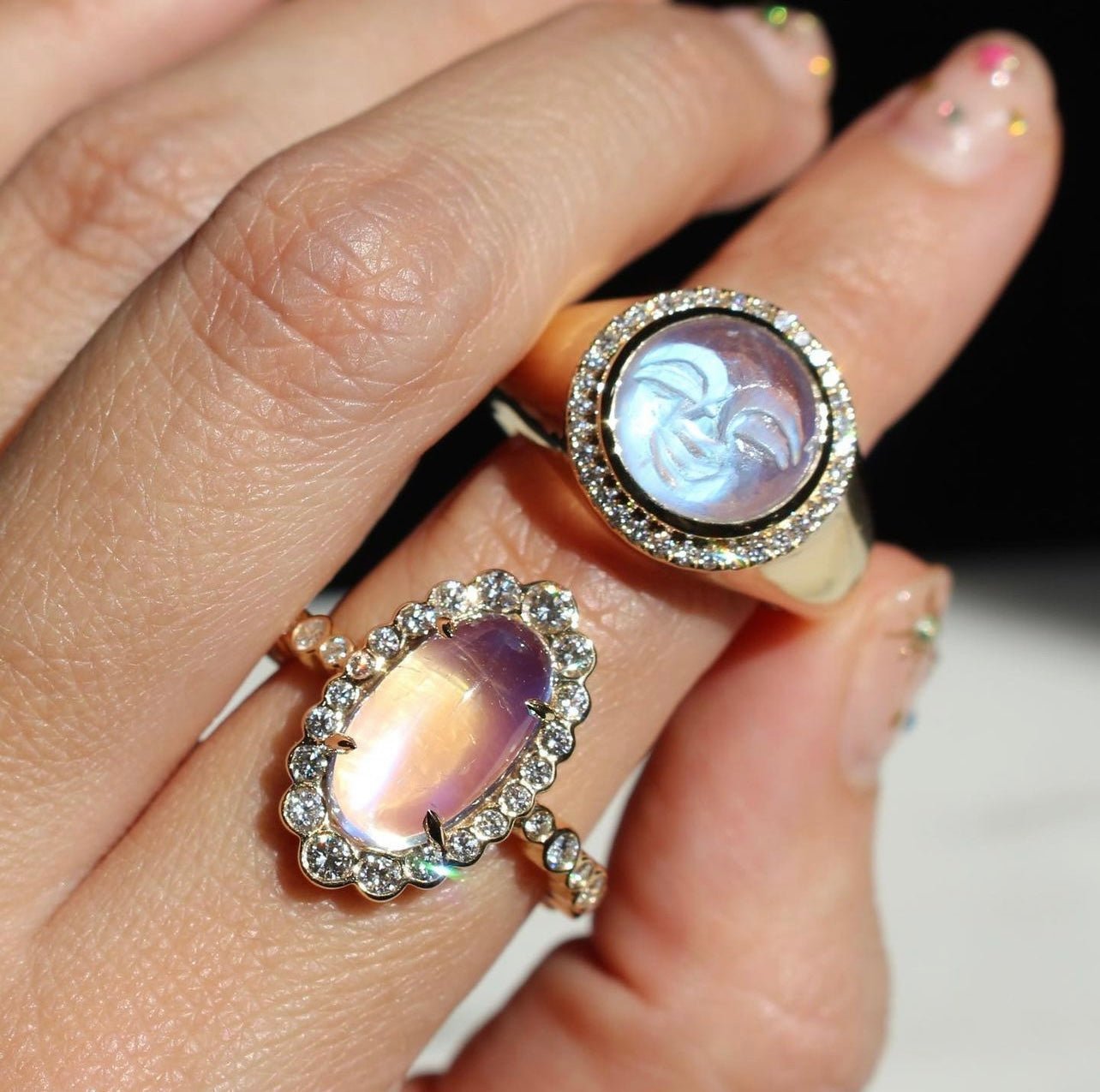If you know Mark Henry, you know how much we love fine gemstones. Gemstones’ range of colors, variety of origin, and unique histories capture our imaginations. We stay for their stunning appearance, incredible shine, and show-stopping conversation starters. There is nothing better than wearing such a beautiful and natural piece of art.
When it comes to diamonds, we share most of the same sentiments. While they are also considered precious gemstones by the gemologist and jewelry community, they are often categorized separately in the minds of consumers.
This may be because they are so famous on their own and don’t have to rely on their counterparts to advertise their power. It may also be because they have been used in jewelry for as long as we can remember.
This distinction between “diamonds” and other gemstones can cause some confusion. While most diamonds are valued for their lack of color, there are colored diamonds on the market. They range in quality and price and stand out from colorless pieces quite clearly. The trick comes when you try to separate a colored diamond from a similarly-toned gemstone.
Both rubies and red diamonds are precious gemstones. Yet they couldn’t be more different in character and meaning.
Let’s dive into what sets them apart so you can spot the separation instantly!
What Makes a Diamond Pop?
Apart from the fact that diamonds are world-renowned, timeless pieces of stone, they are also rigid in their grading criteria. Diamonds are classified based on the 4Cs method, developed by the Gemological Institute of America in the early half of the 1900s. This method cites color, clarity, cut, and carat weight as the four most important factors that contribute to a diamond’s overall quality.
As you can see, color comes first in this list. That is because a diamond is most valuable when it has no color whatsoever. All other factors are secondary, and a slightly colorful diamond with a large carat weight or no inclusions may be appraised for less than an entirely colorless yet smaller diamond with inclusions.
Color Grading Scale
Diamonds are graded on their color with the GIA scale from D-Z. Any stone that is between a D through F rating has no noticeable color, with yellow and brown tints slowly being added the closer you get to a Z. This is not favorable.
The American Gemological Society has its own scale, which runs from 0-10, with a 0 diamond being completely colorless and a 10 diamond having obvious yellow or brown hues.
Exceptions to the Rule
This changes when we get into fancy colored diamonds. They are graded on a separate scale that does not include D-Z from the GIA.
Diamonds sold with intentional color are labeled from most to least desirable as the following: Fancy Vivid, Fancy Deep, Fancy Intense, Fancy Dark, Fancy, Fancy Light, Light, and Very Light. A dark canary yellow diamond is fancy colored and not to be confused with unwanted, Z grade, yellow tinted diamonds.
How Do Diamonds Take On Colors?
Diamonds receive their fancy color from impurities in their makeup. Usually, boron and nitrogen impurities are the culprits for these shocking hues. A blue diamond is made with those from boron and a yellow diamond is created with those from nitrogen. Improper formation of the diamond’s lattice is what creates brown diamonds, and exposure to radiation can turn the stones green.
In terms of composition, all diamonds are a type of carbon.
Red Diamonds
If you’re looking for a diamond that is similar to a ruby, you might enjoy the rare red diamond. It is exceedingly hard to find, as it is the rarest colored diamond on the market. Only 20 or 30 red diamonds known to jewelers are decent enough to be put into use. The improper formation of the red diamond’s atomic lattice produces its color.
These diamonds are found in Brazil, Africa, India, and Russia. The Australian Argyle Mine is a famous source of red diamonds, among other precious colored diamonds.
Ruby Revolution
Rubies, a type of red corundum, hold their rightful place in the precious gemstone world alongside diamonds. They are ancient wonders of the world, used throughout many cultures and notable families. It is marveled for its saturation and deep red color, serving as the hallmark for birthstone for July.
Why Are Rubies Red?
The red effect of a ruby is caused by chromium. High iron content can make rubies appear more pink, orange, purple, or brown. Rubies with just the right amount of chromium (the best possible is 4%) produce that iconic, strong red hue.
The root of the ruby red is not the same as colored diamonds — no atomic lattice formations have gone awry, nor are there any elemental impurities.
Where Are Rubies From?
While rare and precious, rubies are easier to find than red diamonds. They are not missing from most retailers, and they don’t require any digging to find. The finest quality rubies are in Myanmar and Thailand.
Myanmar (which was once called Burma) is famous for its incredibly vivid supplies. The “Burma” ruby has a similar story to the Paraiba tourmaline — over time, its origin-induced name came to define any gemstone of similar value, regardless of where it was found. Burma rubies simply have the ideal amount of chromium to give off the most vivid red color possible.
Different Grading Factors
Rubies have different metrics for quality grading than diamonds do. They still abide by the 4Cs in their own way, just like all gemstones do: Color, cut, clarity, and carat weight can all impact value and price for any stone. However, there is a greater emphasis on the quality of a ruby’s color.
Taking this one step further, a ruby is also judged on how bright or saturated it is. Proper cuts and shapes can help to induce the redness more, but they can’t add saturation or depth. That has to be a natural occurrence, and it will be judged during the grade report’s conduction.
Other Characteristics
To further break down the differences between diamonds (yes, even red diamonds) and rubies, let’s take a look at their other characteristics.
Rubies and Diamonds: Which Is the Most Durable?
Diamond’s rank is 10 on the Mohs scale of hardness. They are the highest possible hardness you can find in any precious stone, and yet that is not their main selling point. This is because diamonds can still break, scratch, and dent. Largely, this depends on how much they are worn and how much they are knocked about.
Rubies are at a 9 on the Mohs scale of hardness. While they are not far from diamonds, this is one way to compare the characteristics of a red diamond to a ruby. If you have two identical-looking stones and can’t seem to find a discrepancy, ask your jewelry for the Mohs hardness of both. The good news is that whichever stone you walk away with, they are both highly durable!
Rubies and Diamond: Cut Styles
Diamonds are mostly cut to be Round Brilliant. These cuts highlight their brilliance and give them a great sense of sparkle from all angles. Their “fire,” the way that they move white light around, is brought out the best by this cut.
Rubies, on the other hand, rarely are round cuts. The cushion cut, oval cut, marquise cut, and pear cut are popular with ruby lovers. This is a great way to visually tell the difference between a red diamond and a ruby. You don’t have to request any paperwork or do any measuring.
Price Patterns
No matter what kind, diamonds are typically more expensive than the average ruby. However, since red diamonds are incredibly rare, they will widen the gap even more than a colorless piece.
The Burma rubies are around $7,000 for 1.5ct. A famed red diamond called the Moussaieff Diamond was sold for $8 million at 5.11ct.
Explore Our Selections
At Mark Henry Jewelry, we love a colorful collection of pieces, especially with our Rouge Collection.
One of our favorite pieces is the Fantasia Ruby Necklace; the gemstone is hard to miss, and the piece is impossible to forget. Coming in at 2.34ct, this gorgeous, trillion shape, Mozambique ruby is accompanied by 0.17ct of diamonds. It is the perfect pairing of both a diamond and a ruby!
Information Is Power
If you are ever confused about the piece of jewelry you’ve set your sights on, ask your jeweler for help identifying the stone.
They have the ability to do research and request certification for all the pieces that they offer. However, they’ll likely know the answer right then and there. The beauty of a ruby is hard to miss.
Sources:
Ruby vs. Diamond: What's the Difference? | Something Borrowed
5 Fascinating Facts About Red Diamonds | Cape Town Diamond Museum
Ruby Value, Price, and Jewelry Information | International Gem Society
4Cs of Diamond Quality by GIA | Learn about Diamond Buying | GIA

